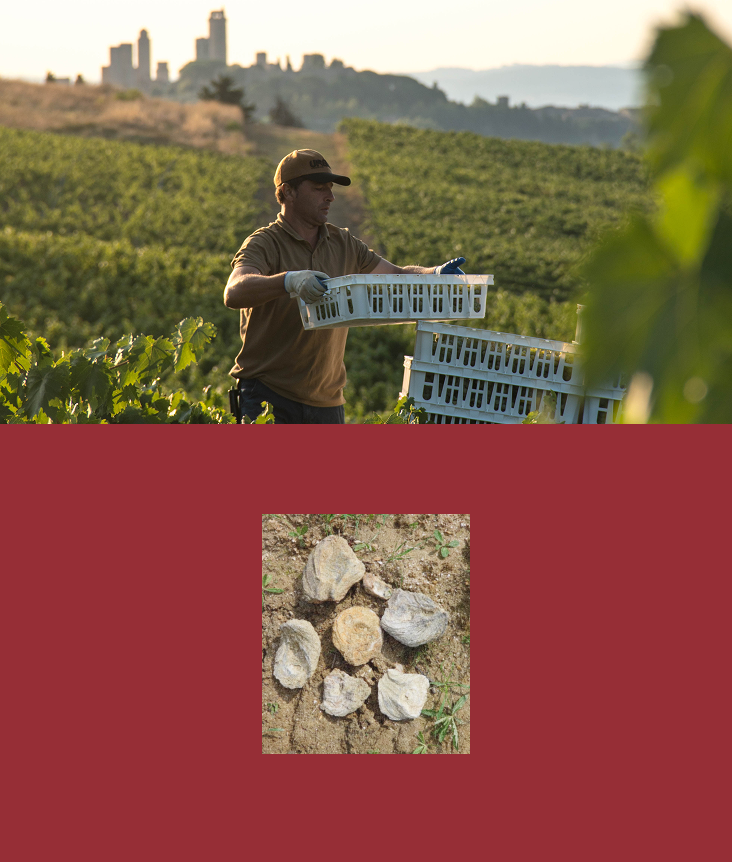
CASA LUCII
IN HUMO VIRTUS
{Our Story}
Casa Lucii is a historic family-run winery located on the hills of San Gimignano, a medieval village in the heart of Tuscany between Siena and Florence.
Località santa maria, san gimignano
Siena / Tuscany
{43° 46’ 77 99 11° 04’ 32 12}
Wine Philosophy

Our motto, *in humo virtus*, represents the complexity of our work while honoring its humble origins: *In the Earth lies Virtue*. In a broader sense, it signifies *fertile land that brings life* or even *life that generates life*.
.png)

IN THE SOIL LIES VIRTUE
The plant residues that fall to the ground are reborn through an organic process known as humification, carried out by millions of saprophytic bacteria. The regenerated organic matter restores fertility to the soil, enabling the lush growth of new herbaceous and woody species.
Understanding this process means respecting the land, life, and its intricate dynamics. Knowledge of its laws allows us to interpret and guide the productive cycles—from sowing to harvest, from the winter pruning of the vineyard to the winemaking itself. More broadly, the pursuit of harmony also extends to the family, collaborators, and all those who, in various ways, are part of the life of the estate.
THE PHILOSOPHY OF
ORGANIC FARMING

Complying with community and national regulations is only the first step. For our company, practicing organic farming is above all a way of thinking — an approach that, when applied consistently, brings a series of benefits that can be summarized as follows:
Our first step toward organic certification was taken in 1997, and today we are proud to have achieved full certification across our entire estate.
Our philosophy is guided by a few simple yet profound principles:
1. To respect and nurture life in all its forms, living in harmony with nature and its rhythms.
2. To cultivate with awareness, understanding that every action shapes the balance of the ecosystem.
3. To produce food that is healthy, natural, and full of authentic flavour.
4. To combine traditional knowledge with modern technology to reduce our impact and work in balance with the environment.
.png)
CASA LUCII
A family
STORY

Our winemaking tradition runs so deep that our family coat of arms has featured three vine leaves since the 12th century.
(GENERATIONAL TRADITION)
Carrying a long-standing tradition comes with great responsibility. Many techniques, practices, and processes are passed down from generation to generation and cannot be found in books. The yeast used for producing Vin Santo, for example, remains alive and is transmitted across centuries. What matters is not a single generation, but the vital impact each one leaves, flowing from one generation to the next.
THE FAMILY TODAY
Teamwork has never been more crucial than in our case.Producing a bottle of wine or olive oil is a long journey, often beginning several years in advance. Being directly involved in every stage — from grape vinification to wine aging, from olive pressing to marketing — brings immense satisfaction and fully rewards the sacrifices made. Every step is overseen by the three siblings.Today, the estate is run by the children of Libanio and Maria Luisa: Luca, Lorenzo, and Marta.

Marta Lucii
/ CO-OWNER

Lorenzo Lucii
/ CO-OWNER

Luca Lucii
/ CO-OWNER
